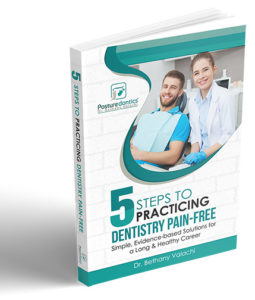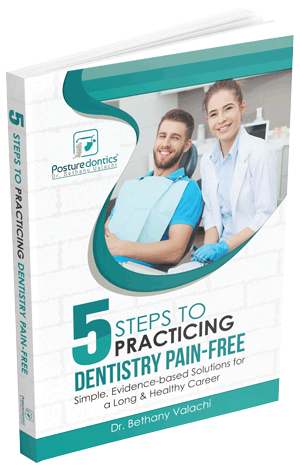-Dr. Bethany Valachi-
Hip pain among dental professionals can be due to a number of factors, however one of the most common is piriformis syndrome. Piriformis syndrome is more prevalent among women than men, and occupations that involve prolonged sitting, such as dentistry, may place women at a higher risk for hip pain than other professions.
The piriformis muscle is responsible for externally rotating the hip and can easily become tight in the operatory when you sit for long periods of time straddling the patient chair. In about 20% of the population, the sciatic nerve runs through the piriformis muscle. In this population, when the muscle becomes tight, it can cause painful sciatica (shooting pain into the buttock and down the back of the leg). With true piriformis syndrome, segments of the piriformis muscle will be quite painful to palpation. Women are 6 times for prone to this problem than are men.
Dental professionals who experience this symptom may consider self-treating the piriformis muscle. If self interventions do not help resolve your sciatica, you should see a doctor as soon as possible, as there are numerous neurological conditions that also cause sciatica.
Self-treat your piriformis trigger points:
- Perform trigger point release on the piriformis muscle with a Backnobber tool or small ball, according to the protocol in Dr. Valachi’s WellBody System for Dental Professionals.
- Perform the piriformis stretch (below)
- Ice afterward, if still painful
Get the entire white paper with the purchase of the WellBody System,
and learn many strategies to prevent hip pain in dentistry.
CLICK HERE

 How can you protect your back, neck, shoulders, and hands for a long and healthy career?
How can you protect your back, neck, shoulders, and hands for a long and healthy career?

